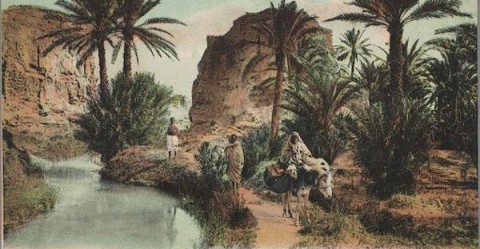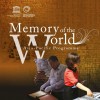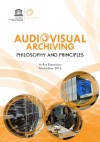
Memory of the World
mow_top_project_picture_938x372_final.jpg

Memory of the World
Highlights
- Since the launch of our new blog “In Living Memory: Making the Most of Documentary Heritage in COVID-19 Decision-making”, 4 posts have been published on the webpage on Resources for Documentary Heritage Professionals. A new post has just been published by Anju Niwata, student at University of Tokyo (Japan), entitled “How will Covid-19 be remembered? - Making Use of Arts & Technology to make the past more accessible”.
- In its ongoing effort to stimulate and inform discussion on how documentary heritage can be enlisted as a unique knowledge asset for COVID-19 decision-making, UNESCO has created a blog space devoted to periodic reflection on various aspects of this issue. You can read the introductory blog post here.
- UNESCO together with its partners has issued a statement, urging for greater support to documentary heritage during the COVID-19 crisis. It lays out four areas of action for Member States, memory institutions as well as the greater public to ensure the effective use of documentary heritage in addressing the pandemic.
- 2nd Memory of the World (MoW) Global Policy Forum on “Disaster Risk Reduction and Management for Sustainable Preservation of Documentary Heritage”: We regret to inform you that, due to the evolving situation related to COVID-19, the 2nd Memory of the World Global Policy Forum, which was scheduled to take place from 27 to 28 October 2020 at UNESCO Headquarters, is now postponed until further notice. We will keep you posted about any further developments, including the new dates for the event. (Online registration, Concept Note and Provisional Programme).
- On 27 October UNESCO is organizing an online policy dialogue among memory institutions and other stakeholders to identify discuss policy gaps in the digital preservation of documentary heritage at risk, and build an international policy agenda – learn more and register.
UNESCO established the Memory of the World Programme in 1992. Impetus came originally from a growing awareness of the parlous state of preservation of, and access to, documentary heritage in various parts of the world.War and social upheaval, as well as severe lack of resources, have worsened problems which have existed for centuries. Significant collections worldwide have suffered a variety of fates. Looting and dispersal, illegal trading, destruction, inadequate housing and funding have all played a part. Much as vanished forever; much is endangered. Happily, missing documentary heritage is sometimes rediscovered.
An International Advisory Committee (IAC) first met in Pultusk, Poland, in 1993. It produced an action plan which affirmed UNESCO's role as coordinator and catalyst to sensitize governments, international organizations and foundations, and foster partnerships for the implementation of projects. Technical and Marketing Sub-Committees were established. The preparation of General Guidelines for the Programme was initiated through a contract with IFLA (International Federation of Library Associations), together with the compilation, by IFLA and ICA (International Council on Archives), of lists of irreparably damaged library collections and archive holdings. Through its National Commissions, UNESCO prepared a list of endangered library and archive holdings and a world list of national cinematic heritage.
Meanwhile, a range of pilot projects employing contemporary technology to reproduce original documentary heritage on other media was commenced. (These included, for example, a CD-ROM of the 13th Century Radzivill Chronicle, tracing the origins of the peoples of Europe, and Memoria de Iberoamerica, a joint newspaper microfilming project involving seven Latin American countries). These projects enhanced access to this documentary heritage and contributed to its preservation.
IAC meetings have since been held every two years. Several National Memory of the World National Committees have been established around the world.
The Memory of the World Register - in some ways the most publicly visible aspect of the Programme - was founded on the 1995 General Guidelines and has grown through accessions approved by successive IAC meetings.
The vision of the Memory of the World Programme is that the world's documentary heritage belongs to all, should be fully preserved and protected for all and, with due recognition of cultural mores and practicalities, should be permanently accessible to all without hindrance.
The mission of the Memory of the World Programme is:

To facilitate preservation, by the most appropriate techniques, of the world's documentary heritage.
This may be done by direct practical assistance, by the dissemination of advice and information and the encouragement of training, or by linking sponsors with timely and appropriate projects.

To assist universal access to documentary heritage.
This will include encouragement to make digitized copies and catalogues available on the Internet, as well as the publication and distribution of books, CDs, DVDs, and other products, as widely and equitably as possible. Where access has implication sfor custodians, these are respected. Legislative and other limitations on the accessibility of archives are recognised. Cultural sensitivities, including indigeneous communities' custodianship of their materials, and their guardianship of access will be honoured. Private property rights are guaranteed in law.

To increase awareness worldwide of the existence and significance of documentary heritage.
Means include, but are not limited to, developing the Memory of the World registers, the media, and promotional and information publications. Preservation and access, of themselves, not only complement each other - but also raise awareness, as access demand stimulates preservation work. The making of access copies, to relieve pressure on the use of preservation materials, is encouraged.
News
- 1 of 30
- next ›











